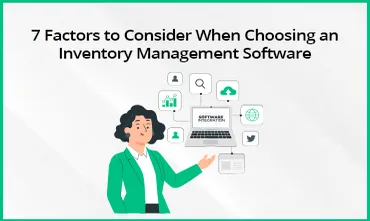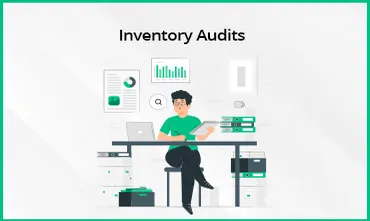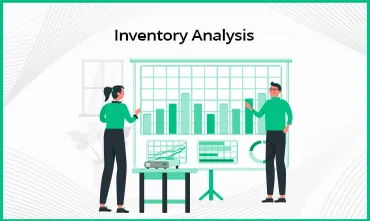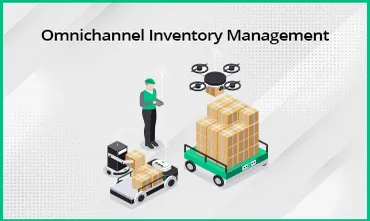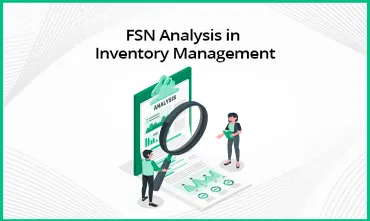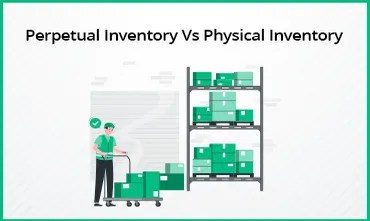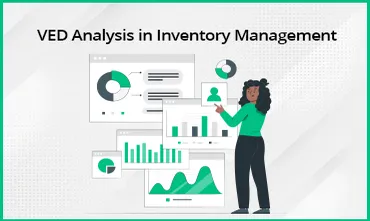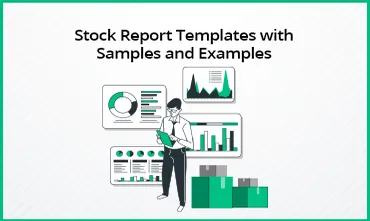A bill of material (BOM) serves as the foundation of a production planning process of a company and provides the data for other planning processes.
A BOM is a crucial part of the manufacturing and supply chain process that unites all the involved departments, including production, inventory management, and material planning to manufacture a final product.
This blog talks in detail about BOM, their advantages and various types, and how you can manage them efficiently with automated software. Let's begin.
What Is a Bill of Materials?
A bill of materials (BOM) contains a detailed description of the raw materials, components and instructions required to manufacture, assemble or repair the final product. Think of it like a list of materials your business needs to build a product.
It contains details like raw materials required for assemblies and reassemblies, the quantities and pricing of each material, parts, and instructions needed to build, produce, or repair a good or service.
A BOM ensures that the assembly process is as effective as feasible and that parts are available when needed. It helps manufacturing companies plan material purchases, estimate costs, control inventory, track and plan material requirements and reduce waste. This leads to optimum usage of raw materials and increased output.
Importance of Bill of Materials
The foundation of every production process - the BOM impacts the shop floor assembly process, inventory on hand, and the acquisition of raw materials. Because a bill of material gives clear insights into what raw materials are required to build a finished product, the quantity of inventory in the company, and how much more should be purchased.
You must have a clear idea by now of how important a manufacturing BOM is for creating any product. Regardless of whether they are food items, pharmaceutical products, chemicals, or paints, a BOM helps the process makers manage and supervise resources and discover materials to reduce unnecessary spending. It enables businesses to gain more value for their money through efficient and cost-effective product manufacturing.
Advantages of Bill of Materials
There are several advantages of bill of materials for your organization. Some of the most notable ones include:
A comprehensive inventory record
A BOM guarantees that all the raw materials are on hand while manufacturing by offering a complete inventory record.
Reduce production delays
Having detailed information on the inventory at hand reduces production delays by saving time and money.
Monitor and eliminate product failures
The data in the bill of material is crucial when it comes to monitoring product failures. Using this document makes it feasible to pinpoint potential failure sources and identify the parts, materials, and components used.
Increase in efficiency
BOM gives a clear picture of the present production situation, which helps the production department plan accurately and work accordingly, increasing their efficiency.
Companies that adopt techniques based on lean production and continuous improvement also benefit from BOM.
Bill of Material Structure
Usually, the bill of material format is hierarchical, with the finished product at the top. It provides product codes, descriptions of the parts, numbers, prices, and other details.
The two types of BOM representation that are most frequently used are single-level and multi-level BOM.
Single-level Bill of Materials
This is a straightforward list showing the quantity needed for each assembly or subassembly required for a particular product. Each component that will make up the product or asset is listed once in a single-level BOM, along with the necessary amount. Think of a single-level bill of material like a grocery list.
Single-level BOM are simple but do not depict the connections between the assemblies, subassemblies, and components utilized to create a product. It could be challenging to pinpoint precisely which part of a product must be fixed or replaced if it malfunctions.
Consider a bill of material for a pen, for instance, which is built in a single-level format. Later, if it is discovered that the pen's outer body is broken, then the body's parts - like the plastic, cannot be distinguished from the plastic used to build the pen cap.
Multi-level Bill of Materials
A multi-level bill of material (BOM) depicts the relationship - sometimes referred to as parent-child - between components, sub-assemblies, and assemblies in contrast to a single-level bill of material.
Materials and/or subassemblies forming the higher-level parts of the BOM hierarchy and assemblies are usually indented to achieve this depiction. A sub-assembly may have several components in turn. When the assembly (or parent) is modified, the modifications propagate down to the subassembly (or child). The departments that produce complicated products employ multi-level BOM because they illustrate these relationships. This is why multi-level BOM are sometimes called indented BOM.
The multi-level bill of material combines all the data necessary to create a finished product. Other than production, it's also helpful for engineering, design, sales, material management, and plant management departments.
Types of Bill of Materials
The three main types of BOM are engineering, sales, and manufacturing and service. They are explained as follow:
Engineering Bill of Materials (EBOM)
A product's initial design requirements are specified in an engineering bill of material (BOM) during the design stage of the product. Engineering BOM contains mechanical and technical drawings of a product, showing the component structure from a functional perspective. It includes the pieces, components, subassemblies, and objects.
Engineers often leverage this type of BOM. They frequently utilize CAD software or other equivalent programs to produce such a BOM.
Sales Bill of Materials (SBOM)
The sales bill of material (SBOM) specifies the details of the product even before it is assembled for sale. SBOM includes a list of finished products and the components necessary to produce these finished goods separately. This bill of material manages the finished product as a sales item, not as an inventory item.
Manufacturing Bill of Materials (MBOM)
Manufacturing bill of material (MBOM) describes all the items and subassemblies needed to make a finished product that can be shipped. Additionally, it depicts how all the components listed in the product are related and what parts need to be processed before assembly. In some cases, the manufacturing BOM is shared with an ERP, a material requirements planning system, and a manufacturing execution system to ensure that procuring/ordering and planning of the materials is executed smoothly to meet the delivery timelines.
Service Bill of Materials
This is mainly intended for service technicians who use a product's components list, installation instructions, and repair instructions. They can use it where the designed product is installed, including the customer's location.
Other Types of Bill of Materials
Assembly Bill of Material
An Assembly BOM lists the parent item as a sales item rather than an inventory item, similar to a sales BOM. An sssembly BOM only refers to the finished product in the sales document. A BOM for an assembly may have one level or multiple levels.
Template Bill of Materials
Due to its flexibility, you can use a template BOM to manage both production and sales BOM. The parent items are displayed at the top, while the components are shown below. Using a template BOM, you can modify, swap out, or eliminate various components in the sales order. Parent and child components are included in these.
Configurable Bill of Materials
Industries that deal with highly configurable items, such as industrial or heavy machinery, need configurable BOM. As a result, this BOM includes all the elements required to design and produce an item following the client's specifications.
Key Elements of Bill of Materials
A BOM level, the part number, name, description, quantity, cost, and unit of measure make up the majority of BOMs' components.
Following are the key elements that you can expect in any bill of material:
Phase
It indicates where each component is in the lifecycle of the product. In the case of a new part, it lies in the design or unreleased phase. Revision levels are often included in part phases to indicate the part's version or revision.
Quantity
The BOM has to list how many parts were ordered or produced for each assembly. The amount specifies how many components will be utilized in an assembly or subassembly.
Priority Analysis
In this way, you can identify critical parts and prioritize their purchases. For example - priority might be given to components with a higher monetary value and a longer lead time.
Alternative Parts
In cases where the original part is unavailable, the reader of the BOM can swap it for another.
Units of Measurement
This specifies the unit of measurement used to order the right quantities when buying or using a part. Inches, grams, kilograms, liters, square feet, or cubic feet, the right unit should be mentioned as the unit of measurement for each quantity.
Description
When it's important to distinguish between similar pieces, descriptions come in handy. The description, exclusive to each part or component, offers more information than the part name or number. For instance, "screws" could refer to machine screws that are 1/2- and 5/8 inches long.
BOM Level
There are several stages a product undergoes in its life cycle. Each bill of materials has a unique level number which explains where it falls in the hierarchy of the bill of materials.
For instance, let's consider the BOM of a bike, where the components of a motorbike, such as an engine, chassis, transmissions, wheels, and lights, are all assigned to different levels. You can further break down all these components into materials and components like gears, clutch, shafts, etc. These materials can also be broken into sub-parts, which would again be a level.
Part Numbers
It is common practice to use part numbers to refer to and identify parts as shorthand. Often, part numbers contain some information about the part. Insignificant or non-intelligent part numbers are arbitrary numbers assigned to parts.
For example - There can be many screws involved in the production of a bicycle, but HSC0342OR where H means hardware, the S stands for screw, the C0342 refers to the length of the screw, and OR refers to the screw's head style. The same screw in an arbitrary numbering system may use the serial number 000389641235, which has no additional meaning beyond identifying the screw.
Component Name
You should be aware of the necessary raw materials for your finished product. You should specify the same caliber of raw materials in the BOM as those used for production. Each item's distinctive name, along with its associated part number, aids in quickly and accurately identifying it.
Procurement Procedure
The necessary components or items can be manufactured internally or obtained from a third party. This details the method of obtaining the part or component. Typically, options include buying the component outright, manufacturing it in-house, or outsourcing the production. Usually the best discount is obtained when purchasing a large quantity of items from the same vendor.
BOM Notes
In addition to the descriptions of parts, this provides additional information about the bill of material. It is possible to include additional details that will be helpful to anyone who refers to the BOM.
Referential Identifier
The reference designator is used when printed circuit-board assemblies are present in a product. The circuit board assembly's reference designator identifies each component's specific placement.
Bill of Material Displays
Generally, you will come across two ways of presenting a BOM which are:
Explosion Display
The BOM for an explosion display begins at the top with the highest level of the product. The product is then divided into smaller, more precise pieces and components. It is the comprehensive list of raw materials required to build or repair a product. It is significant when planning a production series since it is a core part of the planning process.
Implosion Display
An implosion display is the opposite of an explosion display, which shows how individual parts at the lower level are connected to an assembly at the higher level. It contains a Single Level Bill of Material, an Indented Bill of Material, and a Summarized Bill of Material.
Who Prepares Bill Of Materials and Who Uses Bill of Materials?
Given the variety of information, a bill of material frequently requires input from various departments. Production, purchasing, materials management, engineering, and design departments of the organization rely on data from bill of materials.
Similarly, different departments within a corporation may be the main users of various BOM kinds. An engineering BOM, for instance, is frequently used in engineering and design. Manufacturing BOM are frequently used in manufacturing.
How to Prepare a Bill of Materials?
You can make your product design a reality by creating a bill of material as a necessary step in the product development process. But do you know what the process of creating a BOM looks like? We have tried to simplify it for you here:
Decide which information to include
Decide what information will benefit which category of users in your production process, and as per the usage and gravity of the information, decide what aspects, like component details, part numbers, procurement procedure, etc., must be included in the BOM. Incorporating these in the BOM at the outset ensures that the supplies are accessible when required.
Centralize BOM management
Different departments or functions employ various information systems in numerous corporations. The BOM will need to compile data from each of these systems into a single record to continue being accurate and current.
Decide who will have the authority to alter the BOM
The number of editors must be kept to a minimum when you make a bill of material to reduce the likelihood of errors.
Choose a method for keeping track of BOM revisions
Usually BOM undergoes ongoing revisions. All modifications must be tracked for the BOM to continue to be valuable and accurate. Make sure the authors of any modifications can be located easily.
Decide on the BOM presentation
Decide on the BOM presentation by considering the complexity of your product. If the product is not so complex and doesn't require more than 1-2 assemblies, then you can opt for single-level BOM. If your product involves complex processes and materials, opt for a multi-level BOM.
Start the listing
After deciding on the presentation type, list down the components, parts, and materials that will go into making the product.
Make improvements
In this stage, you are required to review the BOM and expand and improve the list by tracking all alterations.
Create and Manage BOM Easily With TranZact
In a production line, a bill of material software can automate the listing of various parts that go into building the final product. Automating your bill of material process can enable you to create multiple lists for a single product using the item profiles created for each component to display subassemblies. To have greater control over your BOM, it's best to use a bill of material software like TranZact.
TranZact is a cloud-based automation tool that helps SMEs digitize their core business processes, from customer inquiries, shipments, sales, inventory to production. By digitizing basic business processes, the software helps you simplify bill of material management and control.TranZact's user-friendly interface will help you effortlessly generate and approve BOMs, enabling you to make data-driven and effective business decisions. The software provides ease of convenience by enabling users to download the BOM as a document and then share it. As a manufacturer, you can sign up to the software for free, access all the base features of the tool and explore how TranZact can simplify your business operations.
Creating an Effective Bill Of Material Is Essential for Effective Supply Chain Management
The accuracy, comprehensiveness, and automation features of a bill of material software facilitates efficient production processes and improves order quality. This process can help you move plans and orders into production more quickly, which helps to meet customer expectations and gain more customers.
FAQs on Bill of Materials
1. What is the difference between a bill of material and a material requisition note?
A bill of material lists all the components of a product that need to be created or acquired. Whereas, a purchase requisition is a document required to start a purchase.
2. What is the difference between BOM and BOQ?
A Bill of Quantities (BOQ) provides the total number of materials needed to execute a project. In contrast, a Bill of Material (BOM) relates to the list of inventories, including raw materials, parts, components, etc.
Project developers can obtain specific quotations for project needs using BOQ, and BOM provides information on what is necessary to complete a project.
3. Can I create a Bill of Material in TranZact?
Yes! You can create both a single and multi-level bill of materials with TranZact within its intuitive production module.




